Lot No : 41
Auction No : 7
Kuras of Kolhapur, (1st Century CE / North-West Karnataka), Raño Gotamiputra Vilivayakura, Lead Unit, Weight: 8.90 grams, Obv: Bow and arrow, with Brahmi legend Raño Gotamiputasa Vilivayakurasa ("Of King Gotamiputra Vilivayakura"). Rev: Tree and crescented ten-arched hill above a rectangle, with a river line inside the rectangle, Heavy Weight, Exceedingly rare in this condition
Lot No : 42
Auction No : 7
Marathwada region, Maharathi Talanthati, Copper Unit, 4.80 g, Overstruck, Obverse: Three arch hill surmounted by a crescent, Brahmi legend around reading ‘(Mahara)thisa Talantha(tisa)’, Traces of under type, Reverse: Tree in railing flanked by small Swastikas on either side, Traces of undertype with legend reading ‘(Maharathisa Ta)lanthatisa’, Very Fine, Rare. Overstruck coins in this series have been reported but are rare.
Lot No : 43
Auction No : 7
Satavahana Empire, Gautamiputra Satakarni (c. 60-84 CE), Silver Drachm, 2.40 grams, overstruck on Nahapana Drachm; Obv: Six-arched hill with the legend “Raño Gotamiputasa Siri Satakanisa” and clear silhouette of Nahapana in the background, almost complete Nahapana legend visible; Rev: Ujjain symbol with crescent, part of Nahapana’s legend visible from reverse;AIC#2749, Rare and historically important coin.
Lot No : 44
Auction No : 7
Satavahana Empire, Vasithiputra Pulumavi (c. 85-125 CE), Silver Drachm, 1.80 grams; Obv: Bust to right, Brahmi legend “Ra-ño Va-si-thi-pu-ta-sa Si-ri Pu-lu-ma-vi-sa”; Rev: Hill and Ujjain symbol with crescent, sun, and Tamil legend; The coin features a detailed bust of Pulumavi, with the reverse highlighting the significant Ujjain symbol and the integration of Tamil inscriptions, reflecting Pulumavi's extensive influence over both the Deccan and Tamil regions. Complete legend on obverse, Very Rare
Lot No : 45
Auction No : 7
Satavahana Empire Vasisthiputra sri Khada Satakarni (c.160-165 CE), Silver Drachm, 2.20 grms; Obv: King's bust facing right with prominent earrings , Brahmi legend Ra-ño Va-si-thi-pu-ta-sa Si-ri Kha-da Sa-ta-ka-ni-sa Rev. Ujjain Symbol, Six arched hill sun & moon in the centre with tamil Brahmi legend around within dotted border, While the coin features jewelry holes, the king’s name remains fully preserved, making it exceptionally rare. Coin of Sri Khada Satakarni is not surfaced in any Indian auction for many years. Vasisthiputra Satakarni, the younger brother of Yajna Sri Satakarni, was embroiled in a prolonged conflict with the Scythian Western Kshatrapas to the west. In a bid to secure peace and strengthen his position, he married the daughter of Rudradaman I, the powerful ruler of the Western Kshatrapas. Despite this diplomatic alliance, Satakarni was ultimately defeated by his father-in-law in battle, a crushing blow that severely impacted the Satavahana Empire's power and prestige.
Lot No : 46
Auction No : 7
Paratarajas of Sindh and Baluchistan – King Bhimarjuna (c. 220-235 CE), Billion Drachm, 2.20 grams, Obv: Diademed bust of King Bhimarjuna facing left, wearing a peaked tiara, with a dotted border surrounding the design, Rev: Right-turning swastika with Kharosthi legend around: Bhimarjunasa Yolatakhmaputrasa Paratarajasa. King Bhimarjuna, like Arjuna (another ruler of the same dynasty), is one of the few Parata kings with an Indian name. His name, a blend of Bhima and Arjuna from the Mahabharata, reflects the influence of legendary figures on the royal lineage.
Lot No : 47
Auction No : 7
Paratarajas of Sindh and Baluchistan – King Koziya, Son of Kozana (c. 235-275 CE), Copper Drachm, 1.90 grams, Obv: Diademed bust of King Koziya facing left, wearing a peaked tiara, framed by a dotted border. Rev: Right-turning swastika with the Kharosthi inscription around: Koziyasa Kozanaputra Parataraja. Very Fine, Scarce. Bhimarjuna was succeeded by Koziya, son of Kozana. However, it is unlikely that Koziya directly succeeded his father. His reign, marked by stability and long duration, saw significant developments, but we cannot confirm an explicit direct succession. Koziya’s era likely bridged a crucial period in the Parataraja dynasty.
Lot No : 48
Auction No : 7
Gupta Empire – Kumara Gupta I (c. 415-455 CE), Silver Drachm, Peacock Type (also known as Madhyadesha Type), 1.80 grams, Obv: Exceptionally detailed bust of the king facing right, with a flat nose, and the possible date GE124 (443 AD) visible in front of the bust, as noted by S. Kumar in his book. Rev: A peacock with open feathers, surrounded by the Brahmi legend: Vijitavaniravanipatih Kumaragupto divam jayati. S. Kumar#3243 Note: Rare, with the date clearly visible in front of the king's bust.
Lot No : 49
Auction No : 7
Gupta Empire – Kumara Gupta I (c. 415-455 CE), Silver Drachm, Peacock Type (also known as Madhyadesha Type), 2.10 grams, Obv: Exceptionally detailed bust of the king facing right. Rev: A peacock with open feathers, surrounded by the Brahmi legend: Vijitavaniravanipatih Kumaragupto divam jayati. S. Kumar#3256, Scarce
Lot No : 50
Auction No : 7
Gupta Empire – Skanda Gupta I (c. 450-475 CE), Silver Drachm, Peacock Type (also known as Madhyadesha Type), 1.80 grams, Obv: Exceptionally detailed bust of the king facing right, Rev: A peacock with open feathers, surrounded by the Brahmi legend: Vijitavaniravanipati Jayati Divam Skandaguptoyam S. Kumar Verity A, Scarce

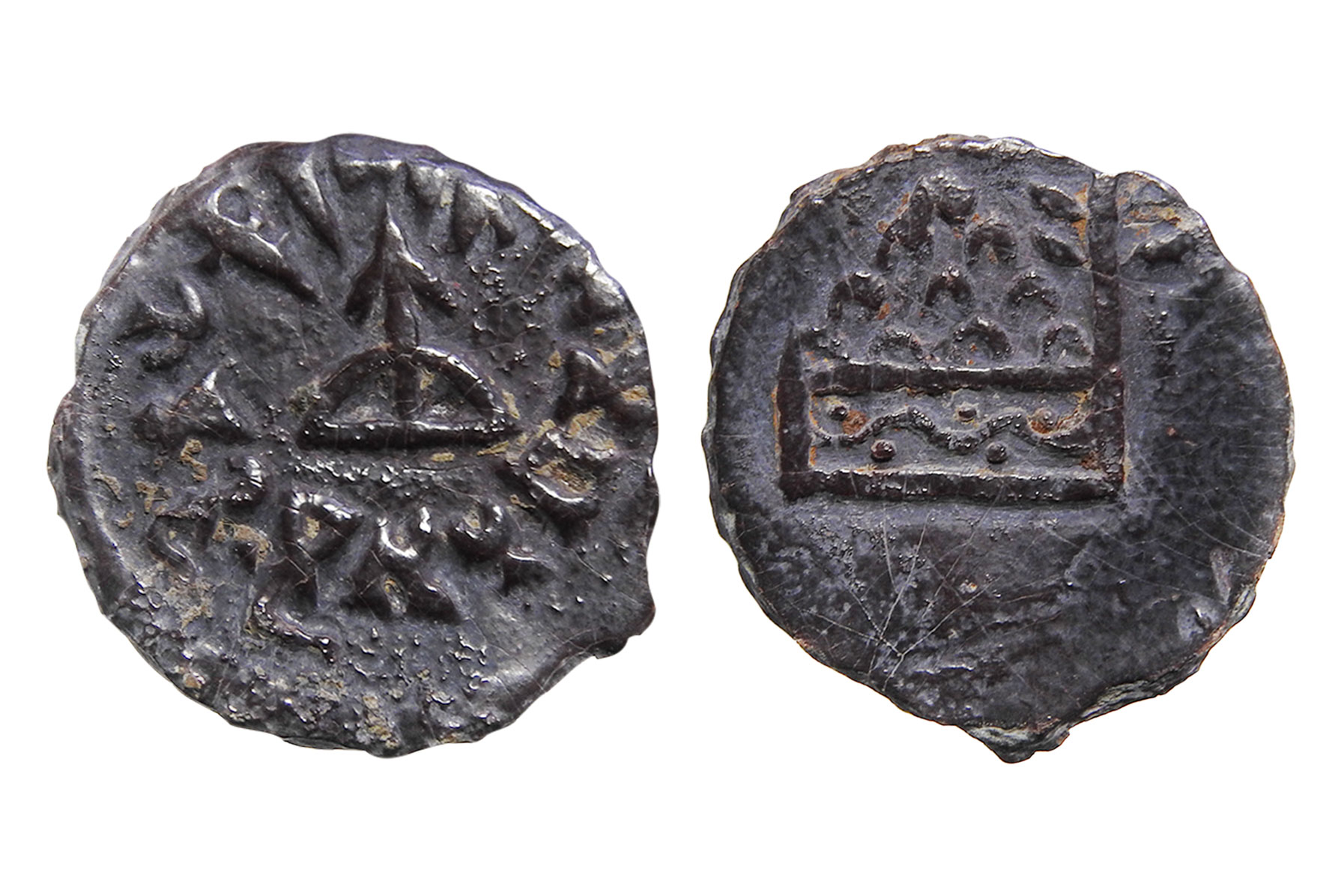

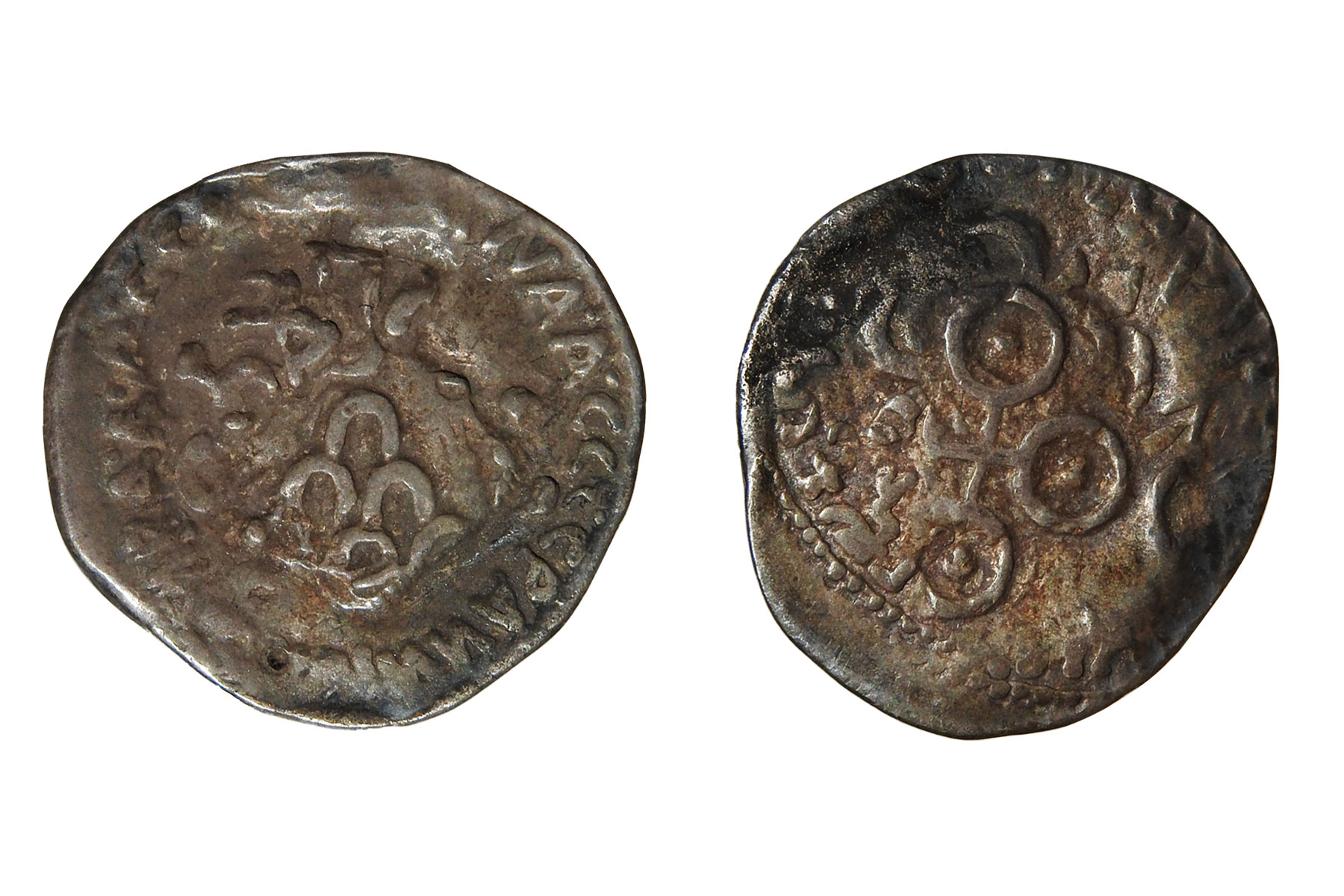

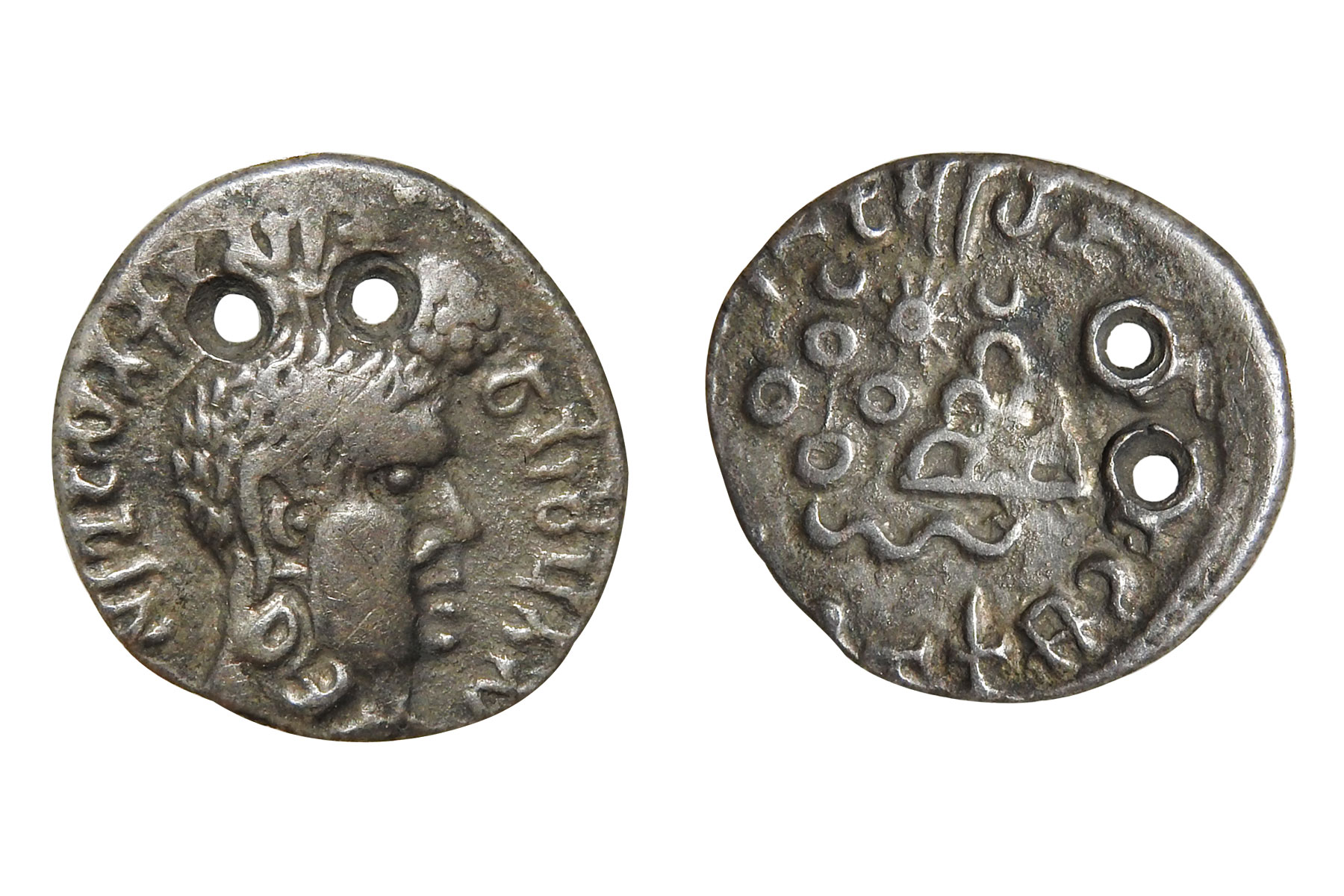
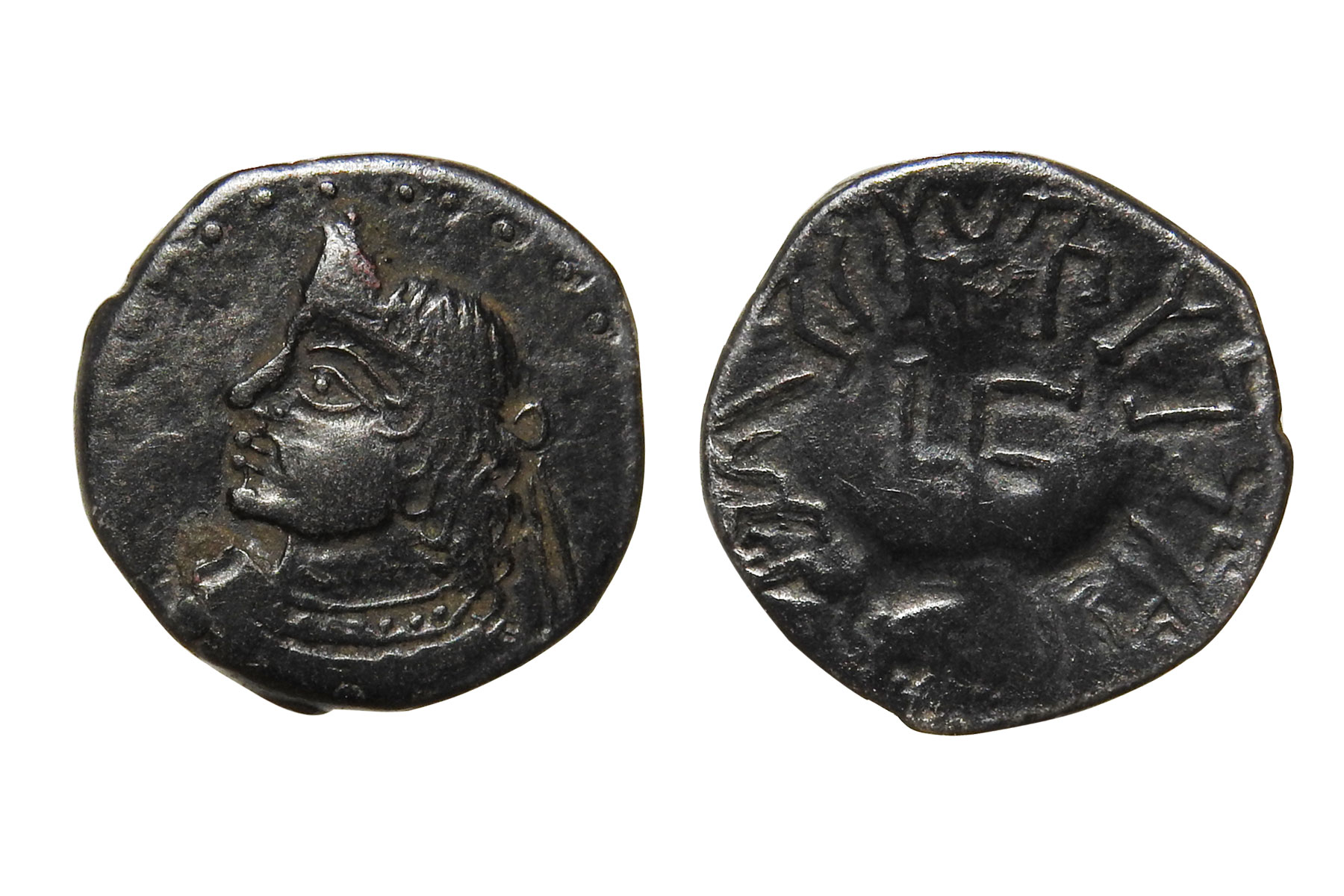

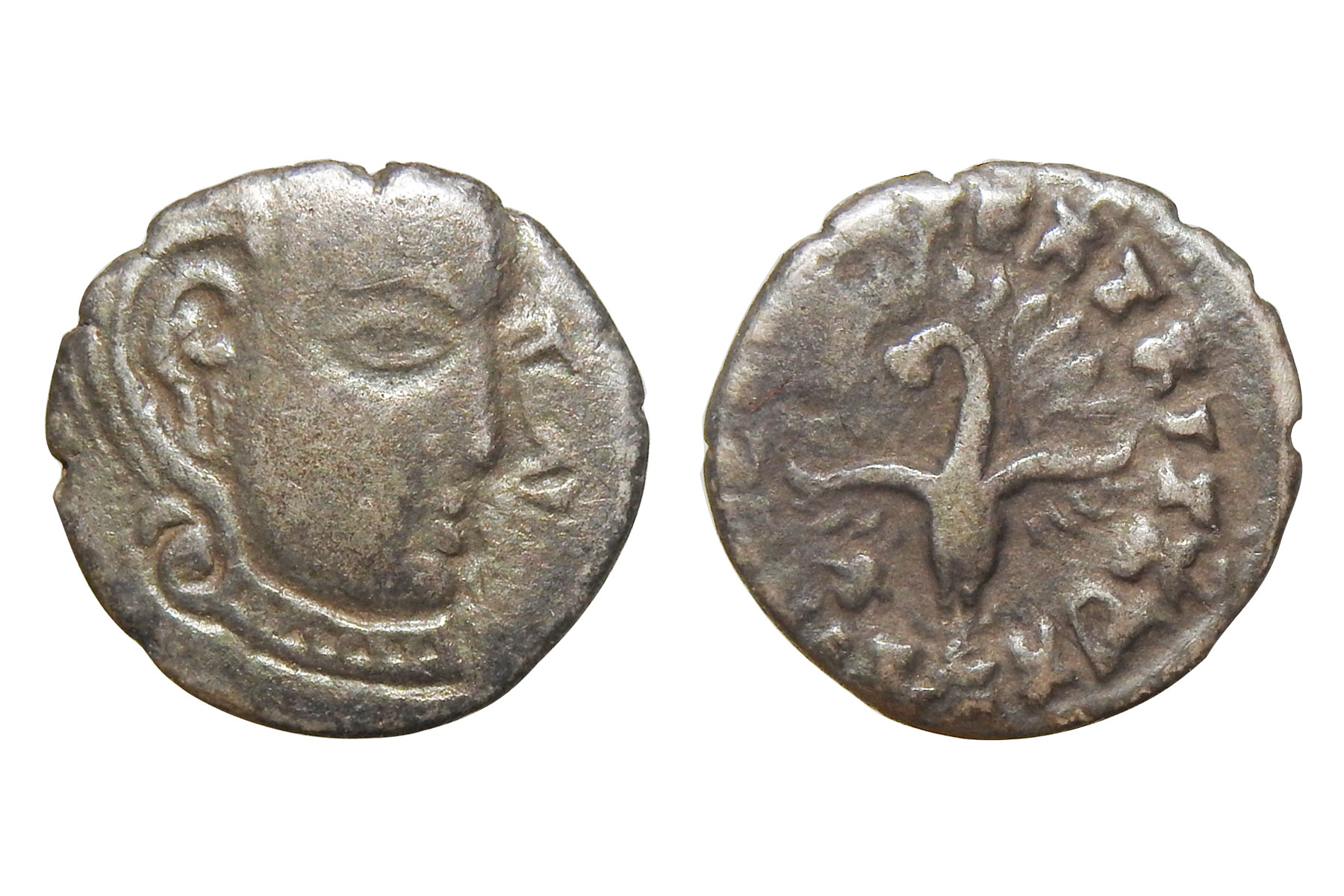
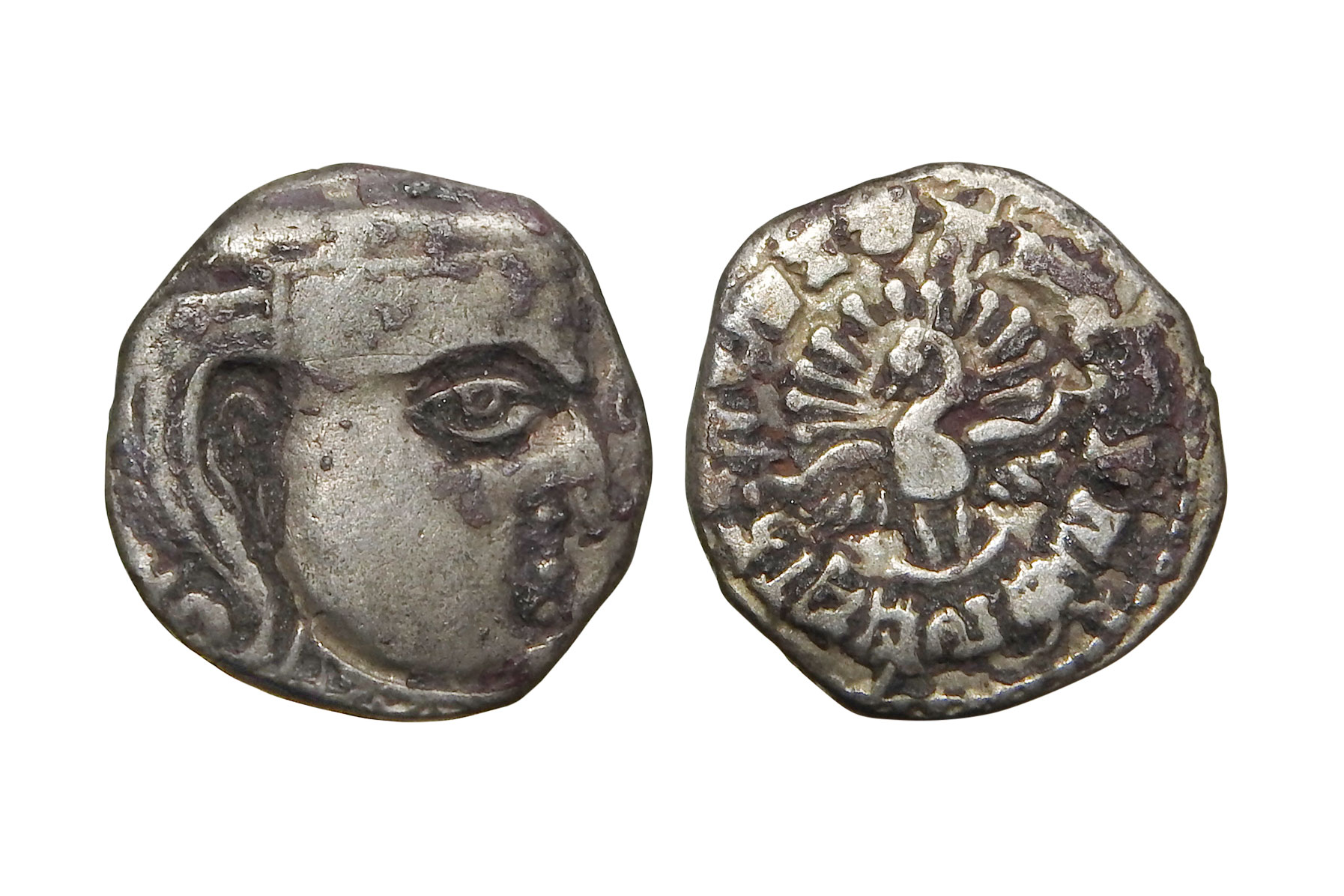
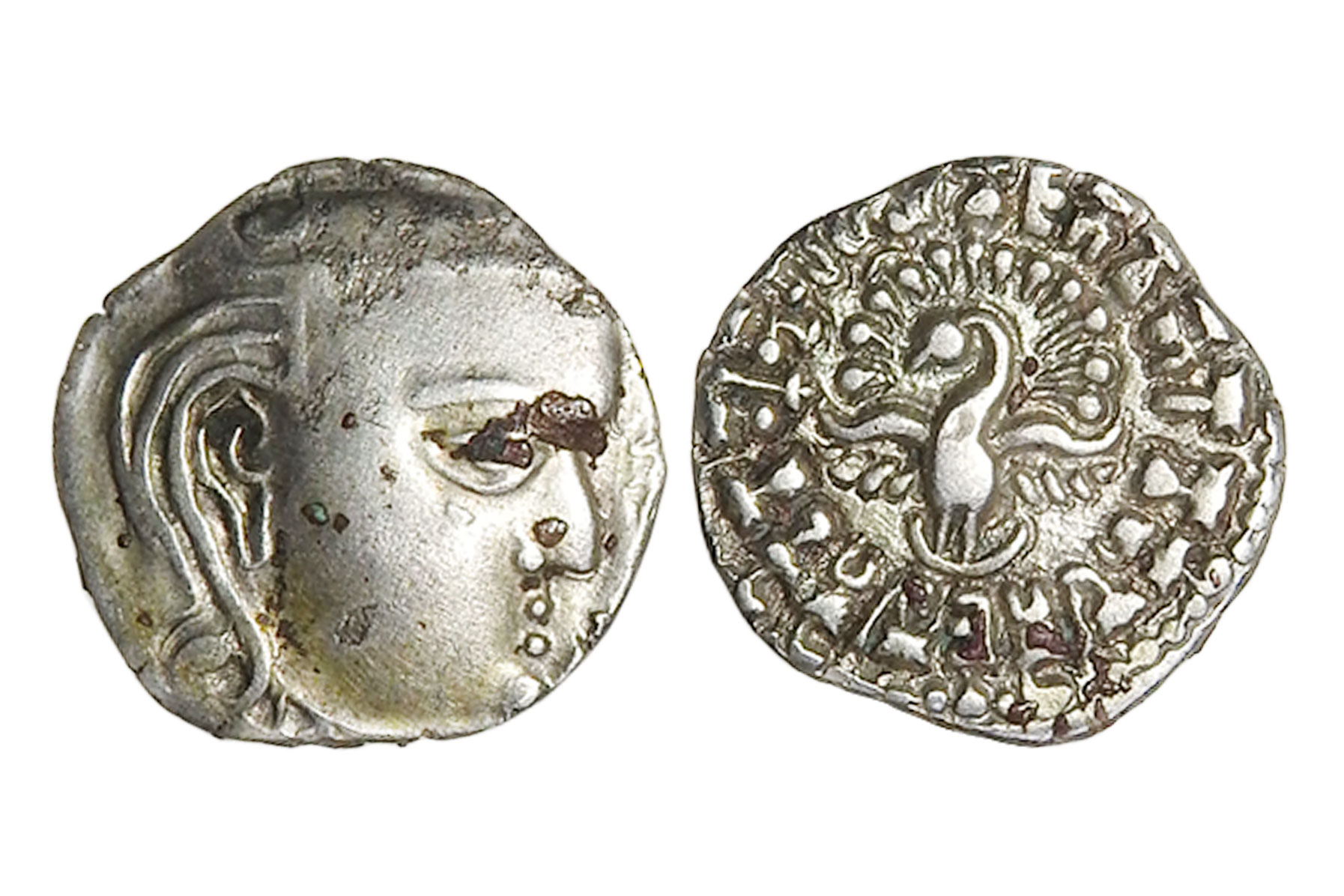
 WhatsApp
WhatsApp